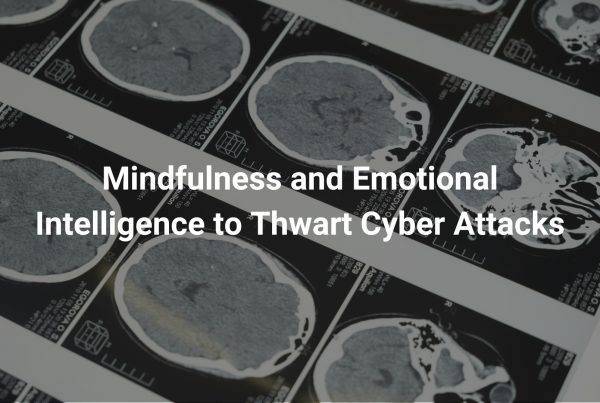Author: Lee Anderson
Date Published: August 16, 2022
Warning: The following article discusses topics of child sexual and physical abuse, which the Innocent Lives Foundation works to prevent. Please be emotionally prepared before proceeding.
The mission of the ILF is to identify anonymous child predators to help bring them to justice. As parents and caregivers, it is important to be able to identify the signs that such predators might be affecting the children in our lives. First, let’s be clear on what is considered sexual abuse. According to the Daniel Morcombe Foundation (DMF), “Child sexual abuse [occurs] when an adult, another child or adolescent uses their power to involve a child in sexual activity. Sexual activity includes sexual intercourse and a range of sexual behaviors that can be physical, verbal or emotional.”
Note that sexual abuse is not only committed by adults. “30% to 50% of all child sexual abuse involves children as the people who are engaging in sexually abusive behaviors with other children.”
Regardless of the age of the perpetrator, most are known by the child and/or the family as opposed to being a seedy stranger that lures children into alleyways. “About 90% of child sexual abuse perpetrated by adults is carried out by adult males who are known to the child. Between 3.9% and 10.7% of child sexual abuse is perpetrated by adult women, also known to the child.” It is also important to understand that the potential for someone to sexually abuse a child is not linked to their gender identity or sexual orientation, so don’t be too quick to judge someone simply because of these things. According to 1 in 6, “[Child] sexual abuse is in no way related to the sexual orientation of the abusive person.”
It’s difficult to fully understand the prevalence of child sexual abuse cases. Many children never tell anyone about their abuse, though some do once they are adults. Research published by DMF shows that 1 in 4 girls and 1 in 6 boys will experience sexual abuse before the age of 18.
The Grooming Process
Sexual abuse is often preceded by what’s known as grooming. A previous ILF post states, “Grooming is when predators insert themselves into the child’s life by exploiting the child’s vulnerabilities. The predator creates a false sense of trust by filling a need in the child’s life and isolating the child. During this process, the predator sexualizes the relationship and ultimately gains control of the child. This process typically happens over a range of months to years.”
This can be a very gradual process. To identify whether this may be occurring to your child, be aware of any of the following activities that a person may be involving your child in:
- [Being overly] interested in contacting your child face to face, by phone, text and/or online
- Regularly offering to spend time with your child alone, wanting overnight visits or co-sleeping
- Being exceptionally helpful in supporting your family in a way that is outside the person’s role
- Buying your child gifts or providing food, clothing or other necessities
- Insisting on touching or tickling your child without consent (This may increase in intensity and sexual nature as your child grows more used to the initial touch.)
- Encouraging children to use alcohol and drugs with them
- Showing explicit materials, pornography and/or their body and genitals to your child
People who sexually abuse children may not use any grooming techniques and jump straight to abuse due to opportunistic or environmental factors (e.g., place, time, or access to a child).
Signs of sexual abuse in children
While abuse can occur during the grooming process, the following is a breakdown of signs to look for specifically related to sexual abuse. (A single instance of one of the following does not indicate that sexual abuse has occurred but should be taken in context with other evidence or behaviors.)
Physical Signs of Sexual Abuse:
- Bruising, bleeding, or swelling in the genital area
- Sexually transmitted infections
- Bruising to breasts, buttocks, lower abdomen or thighs
- Adolescent pregnancy
- Bloody, torn, or stained undergarments
- Difficulty walking or sitting
- Frequent urinary or yeast infections
- Pain, itching, or burning in the genital area
Behavioral Signs of Sexual Abuse:
- Your child or their friend tells you about abuse, directly or indirectly
- Sexual knowledge or behavior inappropriate for your child’s age
- Going to bed fully clothed
- Experiencing regressive behavior, e.g., sudden return to bed wetting or soiling, thumb sucking
- Nightmares
- Self-harming or risk-taking behavior, e.g., drug or alcohol dependency, suicide attempts
- Your child is in contact with a known or suspected pedophile
- An unhealthy relationship with food, e.g., anorexia or overeating
- Unexplained accumulation of money and gifts
- Changes in your child’s hygiene, such as refusing to bathe or bathing excessively
- Developing new phobias
- Exhibiting signs of depression or post-traumatic stress disorder
- Having trouble in school, such as absences or drops in grades
- Overly protective and concerned for their siblings, or assumes a caretaker role
- Running away from home or school
- Shrinking away or seeming threatened by physical contact
In the United States, if you suspect your child or a child you know could be a victim of sexual abuse, report it to the appropriate agency for your region. Their primary goal will be to ensure the long-term safety and well-being of the child. Additionally, you can report and get additional information on rainn.org.
How to Protect Your Child From Sexual Abuse
Unfortunately, there is no guaranteed way to prevent your child from becoming a victim of sexual abuse. However, there are steps you can take to ensure your child can detect signs of grooming and avoid situations where sexual abuse would be more likely to occur.
Robin Dreeke, ILF board member and former head of the FBI’s Counterintelligence Behavioral Analysis Program, offers a roadmap for ensuring open communication and your children’s safety through the acronym TRUST. Following this roadmap will help make your home a safe environment for your child, allowing them to trust you with sensitive information that could end up saving their lives.
Other things you can do to protect your children include:
- Using anatomical names for their private parts
- Explaining body boundaries and that it is not OK for anyone to touch their private parts or ask them to touch theirs. It is also not OK for them to ask other children or adults to touch their private parts
- Talk about the rules for touch and teach children they can say “no” to touch that makes them feel scared or uncomfortable. This might even include hugging or kissing from family members or relatives. Children need to learn that their body belongs to them.
- Talk about body clues and how the body can give us warning signs when we are not feeling safe.
- Explain the difference between secrets and surprises (i.e., a surprise birthday party for a family member is a surprise, it will be revealed in the future. A secret might be if someone showed you inappropriate pictures at school and told you not to tell because you would get into trouble, with no intention of being revealed in the future).
- Teach children to Recognize, React and Report when they don’t feel safe and use developmentally appropriate resources and games to reinforce safety messages
Conclusion
As parents and caregivers, it’s vital that we understand the signs that our children may be involved in any level of grooming or sexual abuse. As you work to make a safe environment where your kids can come to you when trouble arises and teach them these important concepts, they will be more confident and capable of avoiding many of these situations at the outset.
The Innocent Lives Foundation works to identify anonymous child predators and help bring them to justice. You can help.





